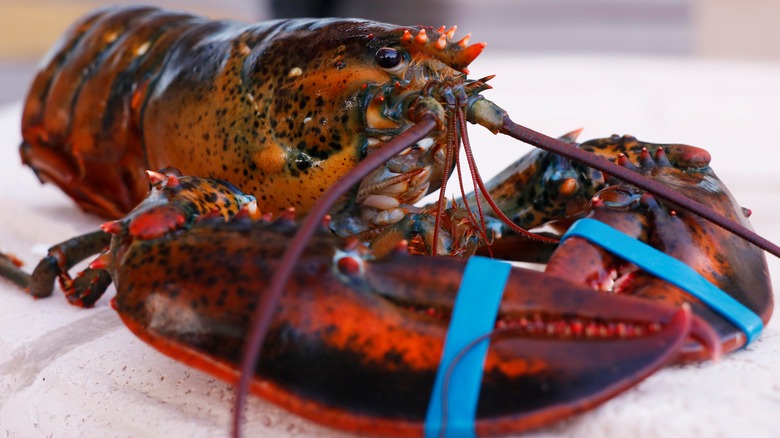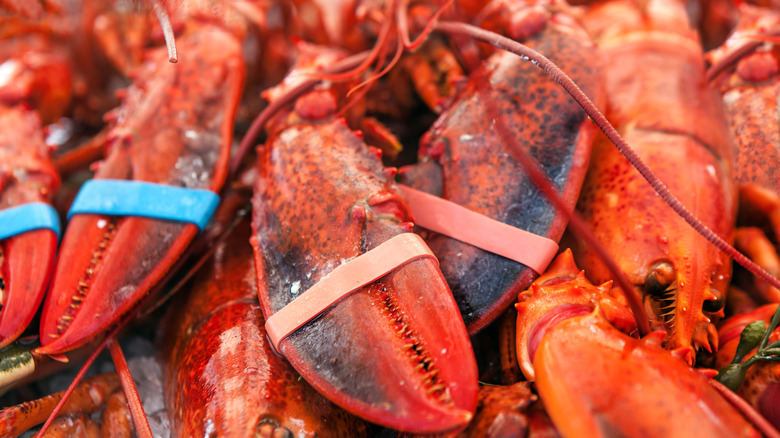Why You Should Always Remove The Rubber Bands Before Cooking Lobster
The art of preparing seafood goes beyond the cooking technique. It's a harmonious relationship that requires respect for the ingredient's journey from sea to plate. When it comes to lobsters, there's more to the removal of rubber bands from their claws than meets the eye. Not only is it a sign of respect for the animal, but it also holds the key to preserving the flavor of this exquisite delicacy.
Lobsters, celebrated for their succulent meat and rich flavor, deserve to be treated with the utmost care. Leaving rubber bands on their claws, though practical for handling, inhibits their natural movements. By removing these bands, we honor the animal.
Beyond ethics, there's a flavorful reason to ensure rubber bands are nowhere near your lobster claws. The bands can impart a subtle yet unwelcome rubbery flavor to the lobster meat while cooking. This unintended seasoning can alter the flavor profile, detracting from the natural sweetness and delicate nuances that make lobster a coveted indulgence. Besides, no one wants to eat what smells like hot or burning rubber.
Carefully remove the rubber bands
To ensure the integrity and flavor of the lobster, carefully remove the rubber bands from its claws by gently holding the lobster by its body. Avoid holding it by the claws to prevent any accidental pinching. Grasp the lobster claw in your hand, and use scissors to snip and release the rubber band from the claw. Avoid any forceful tugging that could damage the delicate meat. Repeat the same step for the other claw.
With the rubber bands removed, cook your lobster using your preferred method — whether it's boiling, steaming, or grilling. The absence of rubber bands allows the lobster's natural flavors to shine. Some people might prefer to quickly slice through the lobsters just behind the eyes and down the back to kill them instantly before they start cooking.
The practice of removing rubber bands from lobster claws isn't just a culinary formality; it's a manifestation of our commitment to preserving the essence of the ingredients and the culinary experience. This subtle yet impactful gesture speaks volumes about our connection to the food we prepare and enjoy. So, the next time you prepare lobster, let respect guide your prep and make the most of this delicious crustacean.

